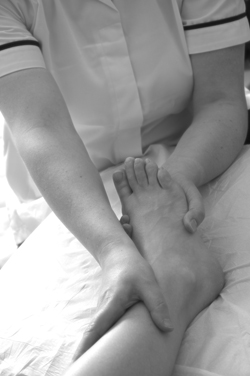No pain, no gain?
Not true!
The myth of “no pain, no gain” can be particularly misleading for patients undergoing hands-on treatment. While some discomfort is often a natural part of the healing process, equating pain with progress can lead to unnecessary suffering and potentially hinder recovery.
Many of our patients come to us after trying different types of treatment, which have often been painful. Your body’s response to pain is to withdraw and tense up, so painful treatments are often unsuccessful. This is because pain stimulates your sympathetic nervous system, which produces a fight or flight response, releasing adrenaline and cortisol. If you are treating an already traumatised area in this way, it can add to this protective reaction – our patients report that they felt themselves bracing to prepare for a painful technique when seeing other therapists.
Stimulating your parasympathetic nervous system with gentle touch, produces the opposite reaction – a calm, relaxed state that promotes healing. John Barnes Myofascial Release is a gentle, hands-on treatment that works with your body to untangle the restrictions that are causing your symptoms without painful, forceful techniques.
It is important to listen to your body and to respond when it is warning you that there is a problem. This applies to receiving treatment, as much as when taking part in activities. Remember that you are in charge of your body, and you should be able to tell your therapist to back off if they are causing you pain.
I understand that some people are looking for a quick fix, and they accept that pain may be part of that solution. But I would urge you to tune in to what your body is telling you before, during and after those treatments. Are you having to brace yourself? Is the pain making you cry out or pull away? Are you suffering in the hours and days following the session?
A skilled therapist will guide patients through their treatment without pushing them into pain, fostering a safer and more sustainable path to rehabilitation. Ultimately, recovery is about gradual improvement and building resilience, not enduring pain for its own sake.
